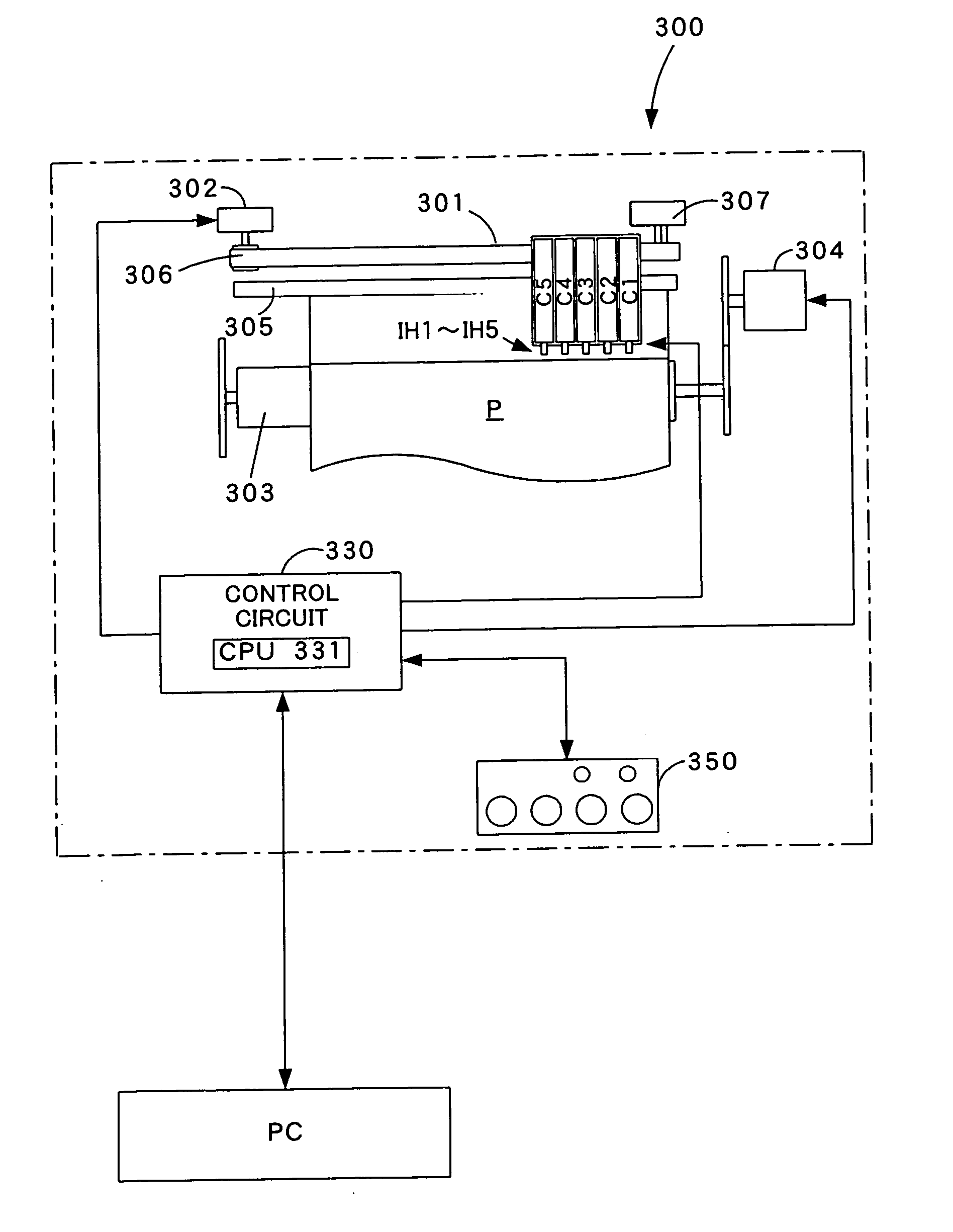Access to printing material container
a printing material and container technology, applied in the field of storage devices, can solve the problems of not being able to conclude normal writing operations of data, not being able to recycle techniques, and practicably impossible to rewrite the identification information stored in each storage device. , to achieve the effect of rewriting
- Summary
- Abstract
- Description
- Claims
- Application Information
AI Technical Summary
Benefits of technology
Problems solved by technology
Method used
Image
Examples
first embodiment
A. Configuration of Storage System in First Embodiment
[0097] The schematic structure of a storage system in a first embodiment of the present invention is discussed below with reference to FIG. 1. FIG. 1 illustrates the configuration of a storage system including a plurality of storage devices and a host computer in the first embodiment of the present invention.
[0098] The storage system of this embodiment includes a host computer 10 and five storage devices 20, 21, 22, 23, and 24, which are mounted on a memory module substrate 200 and are under access control of the host computer 10. The storage devices 20, 21, 22, 23, and 24 are respectively provided in five color ink cartridges C1, C2, C3, C4, and C5 for an ink jet printer as shown in FIG. 15. The five color ink cartridges C1, C2, C3, C4, and C5 keep five different color inks therein; for example, cyan, light cyan, magenta, light magenta, and yellow. An EEPROM that keeps the contents of storage in a non-volatile manner and makes ...
second embodiment
Configuration of Storage System and Structure of Storage Device in Second Embodiment
[0136] The following discussion regards the configuration of a storage system and the internal structure of a storage device in a second embodiment of the present invention with referring to FIGS. 9 and 10. FIG. 9 illustrates the configuration of a storage system including a plurality of storage devices and a host computer in the second embodiment of the present invention. FIG. 10 is a block diagram illustrating the internal circuit structure of the storage device in the second embodiment.
[0137] The storage system of the second embodiment is characterized by that each of storage devices 40, 41, 42, 43, and 44 included in the storage system does not have a test signal terminal TT for the test mode. The other constituents of the storage system of the second embodiment, which are identical with those of the storage system of the first embodiment, are expressed by the like numerals and are not specifica...
third embodiment
D. Process of Writing Identification Data into Storage Device in Test Mode (in Factory Setting Process) in Third Embodiment
[0138] The following describes a process of writing identification data and initial data into the storage devices 20, 21, 22, 23, and 24 in the test mode in a third embodiment of the present invention. FIG. 11 is a flowchart showing a routine of the writing process in the test mode in the third embodiment. FIG. 12 shows one example of connection between a host computer for testing and a storage device to actualize the writing process in the test mode in the third embodiment.
[0139] The writing process in the test mode according to the third embodiment is applied for the storage device having the identical internal circuit structure with that of the storage device 20 included in the storage system of the first embodiment. The respective constituents are thus expressed by the like numerals and are not specifically described here. The processing of the third embodi...
PUM
 Login to View More
Login to View More Abstract
Description
Claims
Application Information
 Login to View More
Login to View More - R&D
- Intellectual Property
- Life Sciences
- Materials
- Tech Scout
- Unparalleled Data Quality
- Higher Quality Content
- 60% Fewer Hallucinations
Browse by: Latest US Patents, China's latest patents, Technical Efficacy Thesaurus, Application Domain, Technology Topic, Popular Technical Reports.
© 2025 PatSnap. All rights reserved.Legal|Privacy policy|Modern Slavery Act Transparency Statement|Sitemap|About US| Contact US: help@patsnap.com



